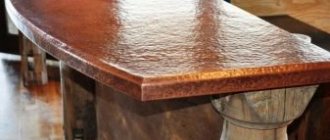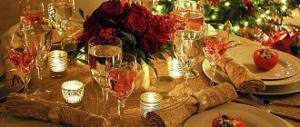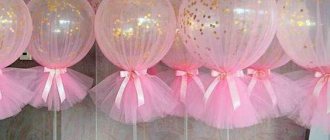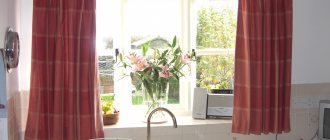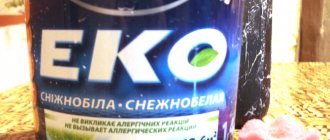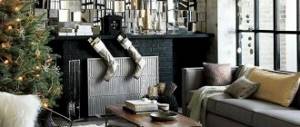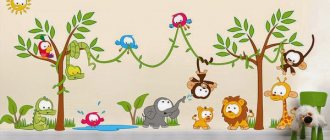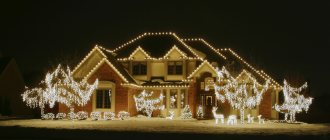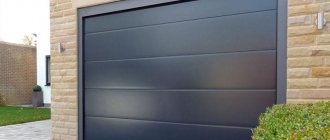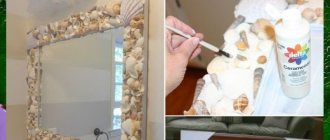Table textiles
Luxurious tabletop - table decoration. So should you cover it with a tablecloth? Yes, after all, a beautiful table top is worse than an ordinary one, and dishes can damage the furniture. A tablecloth will protect an expensive tabletop, while the table will not lose its attractiveness, since a well-chosen tablecloth is an interior decor item that allows you to emphasize style, bring a festive mood to the room, and create a color accent. And even more so, it is considered good form to lay out a tablecloth before setting the festive table.
However, in our time there are alternatives to tablecloths that are completely acceptable by the rules of etiquette. However, let's talk about everything in order: let's talk about how to choose a tablecloth for the kitchen table and for the formal dining room, what the size of the tablecloth should be, how to choose a tablecloth for a round table and how to decorate the table using table textiles .
Tablecloth shape
The main shapes of a tablecloth are: square, oblong (rectangular), oval and round. It is necessary to select a tablecloth that suits the shape of your table:
- square table - square tablecloth
- rectangular table - rectangular tablecloth
- round table - round tablecloth, but square is also acceptable
- oval table - oval tablecloth, but it is possible to use a rectangular tablecloth if there is no oval one.
If possible, it is better to give preference to a tablecloth that has the shape of a table. The exception is a square tablecloth and a round tabletop. For small round tables, a square tablecloth is often deliberately chosen, since when laid on the table, it drapes in an original way and “flows” interestingly down from the tabletop.
However, more often a square tablecloth for a round table is used in combination with a contrasting round tablecloth (a smaller square one on top of a larger round one). All this is done mainly for decorative purposes.
Finishing the edge of the tablecloth
To make your product look neat and beautiful, you need to decorate the edge.
Regardless of whether the tablecloth is for the kitchen or for a table in the hallway, you should take careful measurements and cut the fabric.
There are many types of edging:
- a simple line,
- braid,
- brushes,
- fringe,
- festoons,
- hemstitching,
- lace
The edge of a round tablecloth is treated with bias tape or ribbon. If you plan to trim the fabric with lace, you need to take this into account in your calculations. Otherwise, the hanging part will be too large.
It is important to consider not only the size of the table, but also the length of the hanging parts.
To ensure that the product lies flat and does not bristle with unsightly folds, we recommend adding weight to the edge of the fabric. To do this, you can sew cord or pieces of plastic inside the hem. Then the tablecloth will drape well and not move off the surface.
ATTENTION! For square and rectangular panels, it is important to correctly design the corners. To do this, fold the fabric in the corners with the wrong side up, mark what is left for the hem, and stitch it. Press the seams and trim off the excess fabric, leaving about 1 cm before the stitching.
This is what you should get.
To process a cut on a sewing machine, first iron the seam allowances inward. Then the needle is cut or basted with the seam forward. Then perform a straight line. The basting is removed and decoration begins, if any was provided.
What size should the tablecloth be?
To determine the size of the tablecloth that suits you, you need to measure the tabletop. For a square table, one length is measured, for a rectangular table - length and width, for an oval table - length and width (large diameter and small diameter), for a round table - diameter.
Next, you need to add the length of the “drop” or “overhang” , because the tablecloth should hang from the tabletop. The amount of fabric that hangs down is called a “drop.” The classic length of the “drop” is 20 cm on each side.
That is, it is necessary to add at least 40 cm to the length and width so that the tablecloth “drips” evenly from all sides of the table. This is how the size of the tablecloth is determined for square, rectangular and oval tables.
a – length of the tabletop (large diameter of the oval tabletop) b – width of the tabletop (small diameter of the oval tabletop) c – length of the “drop” or “overhang” Tablecloth size = a+c and b+c
Thus, if the tabletop size is 150 by 150, you need to take a tablecloth approximately 190 by 190. However, tablecloths sold in stores have standard sizes, so you need to select a tablecloth of the size that is closest to what you need.
For a round table we calculate this: d – table diameter c – overhang length Tablecloth size = d + c ∙ 2
That is, if the diameter of a round table is 110 cm, and the overhang is 20 cm along the entire edge, then you need to add 40 to 110. This means that we will look for a round tablecloth with a diameter of approximately 140-150 cm.
One of the rules of table etiquette says: it is better for the tablecloth to be too long than a little short. That is, if the size you need is somewhere in the middle between two standard sizes, it is better to choose the larger one.
Designers recommend making more overhang if there are intricate patterns and original cutouts along the edges of the tablecloth.
However, it is undesirable for the overhang to be too large, as this will create inconvenience for those sitting at the table: the tablecloth will cling to their feet, and this risks moving the textiles and even pulling them off the table along with the dishes. The maximum length of the overhang is 40 cm.
How to sew a tablecloth on a square table (with photos and videos)
Before sewing a tablecloth on a rectangular or square table with your own hands, measure the width and length of the table cover. Also measure the amount of drop (sag) of the tablecloth you need, using the following instructions:
For a tablecloth to the floor: measure the height from the edge of the table to the floor. For a casual dining table: measure from the edge of the table down 2.5-5 cm. This amount of fall (overhang) is usually 25.5-30 cm.
For a formal dining table: the amount of drop (overhang) can be from 40.5 to 61 cm and can cover the seats of the chairs.
Cut length: add 2.5 cm hem allowance to the desired length.
Cut width: add the width to the fall, plus the amount of fall, plus 2.5 cm for the hem.
These photos show how to sew a tablecloth on a table with your own hands:
- If your cut width is larger than the width of the fabric, you will have to sew the fabric. Do this so that you have one center panel and two on the sides. To sew the pieces together, stitch or serger a 12mm seam, press the seam allowance towards the outside of the tablecloth and topstitch ¼mm from the seam line.
- Fold the edges in using a narrow 6mm double hem or overcast them with a serger.
- If you want, you can sew a ribbon, fringe, double frill or other decorative trim onto the bottom edge.
The video “Do it yourself tablecloth” demonstrates all the main stages of work:
Tablecloth color
The color of the tablecloth in the kitchen-dining room or living-dining room should fit into the overall color scheme of the room. So, for example, if the wallpaper in the room is white and green, the curtains are light green, and the upholstered furniture is beige, then the tablecloth can be green, white, beige, or green-beige.
In a light or dark monochrome interior, a tablecloth can be a bright spot, a splash of color. You can support the color of the tablecloth with 1-2 details in the interior.
However, there are also neutral options - these include tablecloths in cream, light beige, light pearl, golden and other similar shades. Neutral tablecloths are suitable for setting tables in any interior, regardless of style and color.
As for the tablecloth for the festive table , the choice here is limitless, because such a tablecloth does not have to match other interior elements in color, since it is laid for one day.
For the most special occasions, it is recommended to give preference to a white tablecloth.
For the New Year's table, you can choose a tablecloth in shades of green (the color of the Christmas tree), red (the color of the most common Christmas tree decoration), and silver (the color of sparkling snow). In addition, the New Year's tablecloth can also have a themed print - a herringbone pattern, with images of snowmen, etc.
Holiday tablecloth ideas
To create a Christmas atmosphere, you can use table covers with bright colors that correspond to this holiday: red, green and gold. You can even skip the tablecloth altogether if you have an elegant or rustic table to create an old-fashioned, unpretentious Christmas feel.
For family holidays, a self-assembled one with a classic design - made of elegant white or cream fabrics - is suitable.
Festive tablecloths - ideas for housewives
To create such festive tablecloths, you can contact a custom tailoring salon, where they will make a masterpiece from your piece of fabric. Or you can create this masterpiece at home, although you will need to use your imagination.
Tablecloth made of patches
You can use two different colored pieces of fabric to create a unique holiday wrap. It is best to use a dark colored piece of fabric as the top layer (such as red) and a light colored piece (such as white) as the bottom layer.
Decoration with decor
If you fold a piece of white fabric together and cut out half a snowflake or Christmas tree, you will end up with a whole snowflake or tree when you unroll the fabric. On a basic tablecloth, which can be green or red, glue or sew snowflakes and your handmade Christmas trees.
You can decorate the borders of the prepared canvas with Christmas trees, and the middle with snowflakes. Children can also be involved in such work. They will be happy to help you glue or cut out snowflakes.
Lining
A pad made of felt, vinyl or other soft fabric will help protect against spills, hot spots, scratches or dents. This lining gives the tablecloth a gentle fluidity and prevents the tablecloth from stretching.
Moreover, this is good safety for many modern polishes.
Runners
Recently I have become a fan of runners. You can find very little such information on the Internet. What kind of animal is this? Tablecloth runners are sometimes called "scarves" or pieces of material that are placed along or across the table. They can be placed on a tablecloth or on an uncovered antique table. Runners have been in demand for centuries to decorate tables, sideboards and buffets when not in use.
Relics were displayed on them, and candlesticks, centerpieces and dishes were placed on runners on the festive table. Runners have a long history and today they are used for decoration in table settings.
- If you decide to use a runner rather than holiday tablecloths, then take care of napkins that match it. They can be beautifully folded or decorated. I have already offered you ideas for this.
- Pay special attention to the material from which your finished product will be made or already sewn.
- Microfiber is moisture and stain resistant. It is easy to care for and does not require ironing.
- Polyester is machine washable and relatively iron-free.
- Cotton is usually mixed with polyester. Such fabrics require gentle ironing.
- Cotton tablecloths can be machine washed, but they require careful ironing. Ironing them in the closet is in vain - you will do this again before using them.
- I also like the idea of using interesting plumb lines for the corners of the self-assembly. I offer you a photo of such a plumb line in the form of a shell and boxes.
If you haven’t yet decided what material to choose for your holiday tablecloths, I suggest watching the following video tips.
I hope that many of you will find these ideas useful and that the New Year holidays will be celebrated with a bright accent on your table.
Table textiles - not just a tablecloth
Cloth napkins. For formal gatherings, cloth napkins are a must. Fabric napkins are often sold complete with a tablecloth. This is convenient: the designers of such sets have already thought out the combination of colors of the tablecloth and napkins, so you don’t have to look for successful combinations.
The napkins can be made from the same fabric and the same color as the tablecloth, but it is preferable for the napkins to be at least a little different. They can even be contrasting. In a good way, a napkin lying on the table should not merge with the tabletop so that it does not fall out of sight.
Runner or track. This is the name given to a strip of fabric that runs the entire length of the table (often with an overhang), but is quite narrow. This path is similar to our traditional towel.
The path is used in different ways, there are no strict rules. More often it is placed in the center of the table on the tablecloth - in this case, the runner should be different in color from the main tablecloth. Dishes with common dishes, as well as vases with flowers and fruits are placed on the path.
In this case, the paths serve the function of decorating the table and protecting the tablecloth. However, the table runner can be laid directly on the tabletop without a tablecloth. In general, this is not prohibited by etiquette. However, it is advisable to prepare and place “plate plates” or place mats on the table - these are napkins that are placed on the table in front of each person sitting. Dishes are placed on these individual napkins, cutlery is laid out, etc. Thus, the tabletop remains protected: shared dishes are placed on the table runner, and individual dishes are placed on the underplates.
Another option is several paths placed across the table - one path for two participants in the feast sitting opposite each other.
Naperon. This is a small additional tablecloth, usually rectangular in shape, which spreads over the main tablecloth. The cover is used to protect the main tablecloth and, of course, to cover the table more aesthetically.
Experiment with table textiles, because a beautiful table means comfort in the home and satisfied faces of guests. Happy feasts to you!
How to decorate a tablecloth
To decorate a festive table, you can decorate a ready-made plain tablecloth yourself. First, divide the cloth into squares (25x25 cm) and stitch a satin braid in a contrasting color. Bright monochromatic braid looks good on a light canvas. Bows made from the same braid need to be stitched.
You can make such a tablecloth from any thin plain fabric (poplin, staple, rayon, chintz, madopolam, etc.). Finish the edges with a narrow closed hem stitch or a curly zigzag stitch, or stitch a ribbon around the perimeter of the tablecloth.
